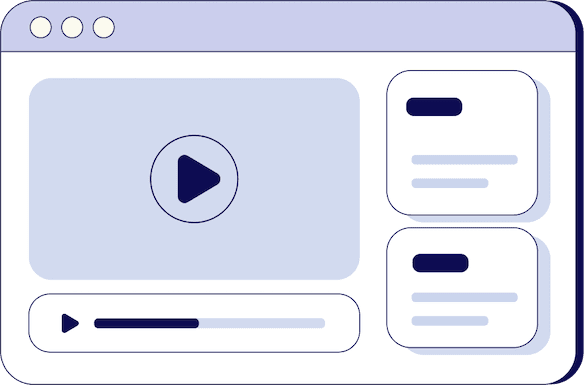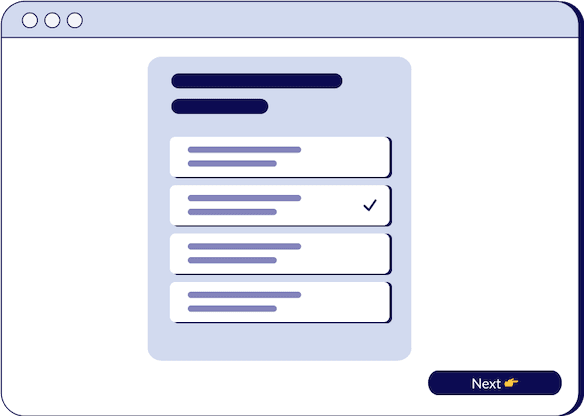
Business Storytelling Made Easy
Kelly D. Parker
Storytelling Strategist

- duration
- 13 min
- Average Score
- 61%
- Stars
- 5
Do you remember the first time you heard a really good story? One of Kelly D Parker’s first experiences was reading Ramona the Pest by Beverly Cleary as a kid. She loved curling up in her favorite chair in the living room and immersing herself in Ramona Quimby’s misadventures. Even now, she remembers her heart racing as Ramona got into trouble over and over again.
Stories have always been a powerful force in Kelly’s life because they allow her to experience other worlds and make sense of her own. But stories aren’t just for books or movies; they are one of the most powerful tools in sales and leadership. In a world cluttered with forgettable messages, stories make us memorable.
The Science Behind Storytelling
Research conducted by psychologist Jerome Bruner suggests that facts are 20 times more likely to be remembered if they’re part of a story. Stories create powerful connections between the storyteller and the listener. Yuri Hassan, professor of psychology and neuroscience at Princeton University, discovered that as you hear a story unfold, your brain waves actually start to synchronize with those of the storyteller. The greater the listener's comprehension, the more closely the brainwave patterns mirror each other.
This kind of connection is vital in sales. Stories are proven to affect behavior. For example, Melanie Green, a communication professor at the University of Buffalo, says that people are more likely to make changes to their lifestyle and health habits if they see a character they relate to making the same change.
The Role of Storytelling in Sales
If a salesperson wants to get anyone to do anything, they would do well to learn how to tell better stories. Yet too often, sales professionals are telling the wrong stories or not telling them at all, wasting time and precious resources on campaigns that miss the mark.
Kelly has been studying stories since she was a kid and has brought them to life as a professional corporate marketer for over a decade. Today, she aims to show salespeople the easy way to create their own stories that connect, persuade, influence, and break through all the clutter.
Understanding the Audience: The Problem and the Pursuit
The worst story of all is the one that is told too soon. This is a common mistake that aspiring storytellers make. They launch into a story without knowing the first thing about who they’re talking to. Before telling any story, a salesperson must deeply understand their audience’s problem and pursuit.
The problem is where the audience is right now. It’s the issues they’re facing in their current state and how they feel about it. The pursuit is where they want to be, who they want to be, and how they will feel in this future perfect world.
Liz J. Simpson, a business development expert and LinkedIn top sales influencer, understands her audience’s problem and pursuit to create messages for her email marketing, website, and social media content. She listens to her clients, extracts specific elements from what they’ve said, and infuses it into her language and visuals.
Painting a Vivid Picture
To tell a good story, a salesperson has to paint their audience a picture that they can remember and repeat. They need a specific person, a specific challenge, specific imagery, and specific feelings. Specific doesn’t mean long and drawn out; it means including distinguishable characteristics that the audience can relate to.
Nike’s ads with LeBron James are a perfect example. They don’t need a bunch of close-up shots of shoes because they’ve found the perfect person in LeBron James to represent a relatable challenge—overcoming obstacles to beat an opponent. They use specific imagery to represent a progression of feelings like defeat, discouragement, hope, victory, and resilience.
Making Proposals Irresistible
Proposals are a critical part of sales and leadership. Sales professionals are constantly making proposals: buy my product, try my service, join my cause. Stories make proposals extremely appealing and stack the odds in favor of the salesperson.
First, stories help get the timing right. No one wants a marriage proposal on the first date, but too often, salespeople expect their audiences to commit too soon. Well-placed stories slow down the process just enough to build credibility and trust.
The Power of Storytelling in Sales
Good stories position salespeople to be givers before they expect to receive. Stories make proposals irresistible because they build connections and infuse a human element into businesses, brands, and programs. By the time a salesperson goes in for the ask, it feels like the next logical step.
Stories are the connective tissue that links the salesperson to the solution in people’s minds. So, by the time the salesperson presents their solution or proposes their offer, the audience says, “It’s about time. I’ve been waiting for this.”
Sales professionals should tell more stories. Sharing stories, whether they’re about the greatest losses, greatest wins, or the context in which they've learned their greatest life lessons, will paint pictures that show people they understand their problem and pursuit. And who knows? Maybe these stories will serve a bigger purpose, helping someone find connection, community, and a little bit of fun.
Thank you for reading, and remember—the power of storytelling can transform your sales strategy, boost your success, and build lasting connections with your audience.
How Triple Session works
Training, Testing, & Feedback
Triple Session's proven formula accelerates your sales performance through consistent, organized practice, backed by measurable results.

Bite-Sized Knowledge
Our expert-led video sessions simplify complex sales concepts into easy-to-digest 5-15 minute videos for better retention.

Test Your Understanding
After each session, there will be a quiz to test your understanding and help you improve on any areas that need more attention.

Evaluate and Grow
Get progress snapshots after each quiz to track your improvements and achieve your sales mastery goals.